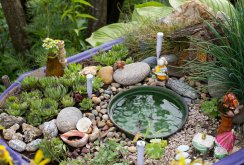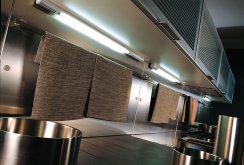Types of autonomous sewage: which one to choose for a house and a summer residence
We have long been accustomed to the reliable and uninterrupted operation of centralized sewage in apartments. With a move to a country house or cottage, nobody wants to lose comfort, so you need to arrange an autonomous sewer. It is not difficult to do this, you just need to determine the appropriate type of water disposal and take into account several important points when planning it. Then it will be convenient to use, and simple maintenance. Consider what types of autonomous sewage systems exist.Types of Sewerage
All types of organization of liquid effluents are divided into three groups:- industrial;
- storm;
- household.
- separate - in it storm drains are discharged separately from the sewage;
- semi-separate, where the output is separate, and all drains are connected in the collector;
- general alloy, in which all drains are discharged together.
- cesspool;
- dry closet;
- septic tank.
Cesspool
This is the simplest and cheapest way to use sewage disposal. For its organization, they dig a pit and place a tank or build it out of brick. The cesspool needs regular pumping. If it is done without a bottom on a drainage pillow, domestic wastewater will go into the ground, polluting subsoil water. In such a place it will no longer be possible to dig a well or punch a well. It is better to make the container airtight so as not to harm the site and sources of drinking water. Such a pit will have to be pumped out most often. You can save on pumping by building a septic tank.Septic tank
The septic tank differs from the cesspool in that the solid fractions in it decompose special bacteria. As a result, clarified water and sludge are formed. Septic tanks can be one-, two-, three-chamber or more. In each chamber, water passes a certain degree of purification. Water purified with a septic tank can be used to irrigate the garden or discharge it into a storm sewer. As a result of the activity of bacteria, sludge turns into an organic fertilizer useful for plants. When cleaning the septic tank, it is mixed with compost or poured directly onto the beds or under the trees. Place under the septic tank choose the lowest on the site. In the immediate vicinity there should not be wells, buildings on the foundation, trees, reservoirs. A septic tank without pumping has many advantages compared to a cesspool:- complete absence of odors, since as a result of the vital activity of bacteria only methane and carbon dioxide are released into the air;
- by all rules, a constructed septic tank can function without cleaning and pumping out for up to ten years;
- all equipment is arranged underground, does not spoil the design of the site and does not take up space;
- You can arrange a septic tank with your own hands from improvised means;
- a septic tank is non-volatile if it does not use aerators.
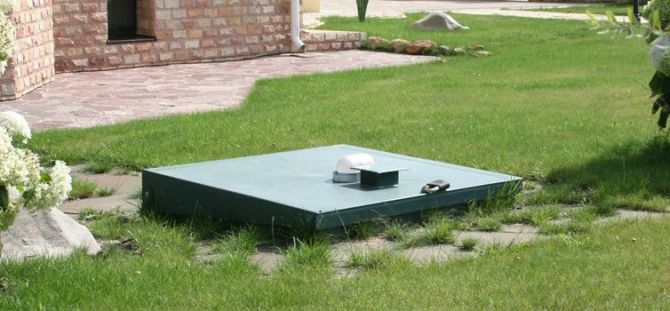
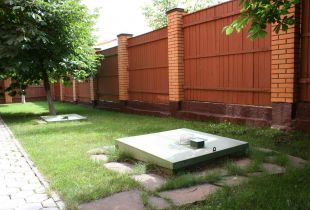 Septic tank for giving: features and advantages (20 photos)
Septic tank for giving: features and advantages (20 photos)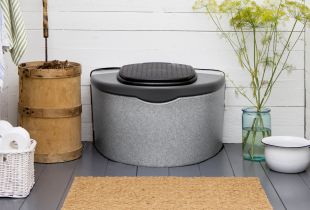 Dry closet for a summer residence - choose comfort (21 photos)
Dry closet for a summer residence - choose comfort (21 photos)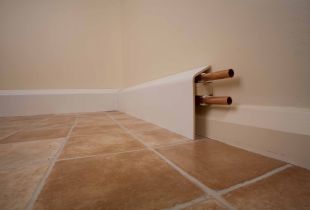 How to hide sewer and heating pipes: expert advice (26 photos)
How to hide sewer and heating pipes: expert advice (26 photos)

